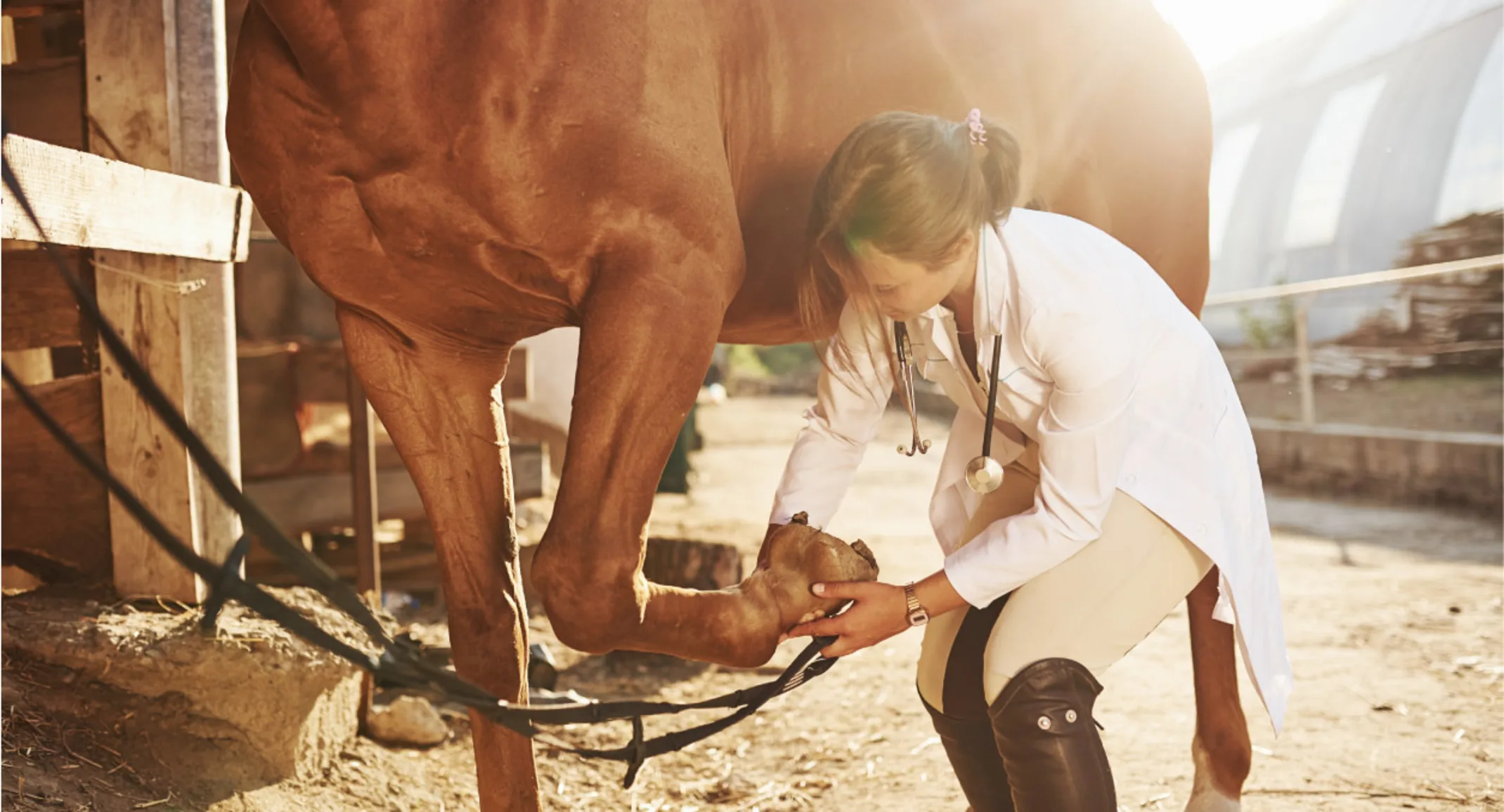Laminitis
General

I’m sure many of you are looking out your windows and thinking how lush and green your pastures are. You may even be thinking how good your horses look now that they are so fat and shiny. Although pudgy horses grazing on lush, green grass may make a pleasant picture, this idyllic image can very well be cause for concern. This is the time of year to be especially cautious to watch out for laminitis as a bout of this crippling disease can be triggered by excess intake of lush pastures. Although grazing of fresh grass is not the only causative factor for a bout of laminitis, it is one of the most common causes. This is especially true if your horse is insulin resistant, a condition similar to human metabolic syndrome and type 2 diabetes.
Laminitis, by definition, is inflammation of the sensitive laminae of the foot. These sensitive laminae are responsible for the structural connection of the interior structures of the foot to the hoof capsule. When these laminae become inflamed and damaged, the connection of the soft tissue of the foot to the hoof wall becomes unstable. The coffin bone can then begin to rotate or sink downwards within the hoof capsule. When this sinking or rotation occurs, the condition has progressed from laminitis to founder. Not only are these conditions very painful for the horse, they are also life-threatening if not treated promptly and appropriately.
The exact mechanism by which grazing lush pasture triggers a bout of laminitis is not completely understood, but some recent research has shed some new light on the condition. Young growing grasses contain an abundance of sugars and other nonstructural carbohydrates. When these are ingested and digested by a horse, glucose is produced. The body responds by producing insulin so that the cells can take up the glucose and use it for fuel. When a horse is insulin resistant, its body must produce much more insulin than normal for the cells to be able to utilize the glucose. This results in above normal levels of both glucose and insulin to be circulating in the bloodstream. Recently, excess insulin has been shown to induce inflammation in various systems within the body including the sensitive laminae of the feet.
The hallmarks of inflammation anywhere in the body are heat, pain, and swelling. Unfortunately, the hoof capsule is not expandable so when the laminae swell within it there is a dramatic increase in pressure within the hoof wall. This pressure increase causes the blood supply to the soft tissues of the foot to be severely compromised and can result in death of some of the soft tissues of the foot. The increased pressure, as well as the inflammation itself, causes severe pain to the horse. Consequently, the most common signs of laminitis are reluctance to walk or move due to pain in the feet, increased temperature of the hoof wall, and pounding pulse to the affected feet. Additionally, affected horses may adopt a “sawhorse” stance with the front feet placed out in front of the body and the hind feet camped under. In this position, the horse is trying to relieve pressure on its painful front feet. If you notice any or all of these signs, it is very important to contact your veterinarian and farrier immediately. It cannot be overstated; laminitis can be life-threatening if not treated promptly and appropriately.
Although any overweight horse is at risk of laminitis, insulin resistant horses have a much greater chance of suffering a bout of it. There are several hallmarks of insulin resistance to watch for in your horses. Horses with this condition are commonly “easy keepers” or “air plants” that need very little food to maintain their fat condition. In addition, these horses tend to store their excess weight in unusual fatty deposits, usually the crest of the neck and fat pads behind the shoulder and around the tailhead. There is a blood test that is available to detect insulin resistance. If you suspect your horse has this condition, contact your veterinarian for an evaluation and testing. Dietary and lifestyle changes can be implemented to reduce your horse’s risk of developing laminitis if he is insulin resistant. Neither insulin resistance nor laminitis is necessarily death sentence for your horse, and with careful vigilance, you can help prevent it from suffering a bout of this crippling disease.
